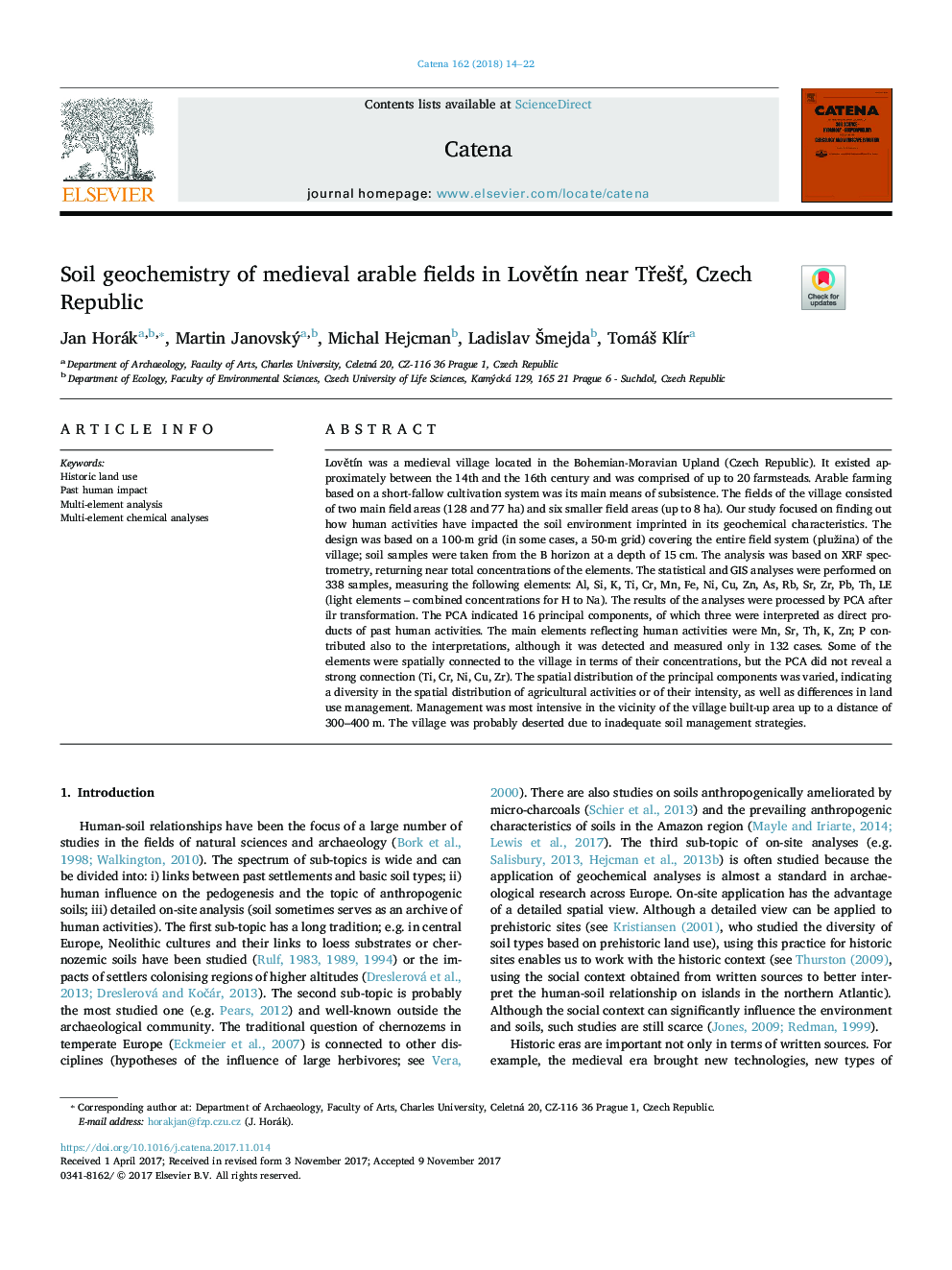| کد مقاله | کد نشریه | سال انتشار | مقاله انگلیسی | نسخه تمام متن |
|---|---|---|---|---|
| 8893721 | 1629192 | 2018 | 9 صفحه PDF | دانلود رایگان |
عنوان انگلیسی مقاله ISI
Soil geochemistry of medieval arable fields in LovÄtÃn near TÅeÅ¡Å¥, Czech Republic
دانلود مقاله + سفارش ترجمه
دانلود مقاله ISI انگلیسی
رایگان برای ایرانیان
موضوعات مرتبط
مهندسی و علوم پایه
علوم زمین و سیارات
فرآیندهای سطح زمین
پیش نمایش صفحه اول مقاله

چکیده انگلیسی
LovÄtÃn was a medieval village located in the Bohemian-Moravian Upland (Czech Republic). It existed approximately between the 14th and the 16th century and was comprised of up to 20 farmsteads. Arable farming based on a short-fallow cultivation system was its main means of subsistence. The fields of the village consisted of two main field areas (128 and 77 ha) and six smaller field areas (up to 8 ha). Our study focused on finding out how human activities have impacted the soil environment imprinted in its geochemical characteristics. The design was based on a 100-m grid (in some cases, a 50-m grid) covering the entire field system (plužina) of the village; soil samples were taken from the B horizon at a depth of 15 cm. The analysis was based on XRF spectrometry, returning near total concentrations of the elements. The statistical and GIS analyses were performed on 338 samples, measuring the following elements: Al, Si, K, Ti, Cr, Mn, Fe, Ni, Cu, Zn, As, Rb, Sr, Zr, Pb, Th, LE (light elements - combined concentrations for H to Na). The results of the analyses were processed by PCA after ilr transformation. The PCA indicated 16 principal components, of which three were interpreted as direct products of past human activities. The main elements reflecting human activities were Mn, Sr, Th, K, Zn; P contributed also to the interpretations, although it was detected and measured only in 132 cases. Some of the elements were spatially connected to the village in terms of their concentrations, but the PCA did not reveal a strong connection (Ti, Cr, Ni, Cu, Zr). The spatial distribution of the principal components was varied, indicating a diversity in the spatial distribution of agricultural activities or of their intensity, as well as differences in land use management. Management was most intensive in the vicinity of the village built-up area up to a distance of 300-400 m. The village was probably deserted due to inadequate soil management strategies.
ناشر
Database: Elsevier - ScienceDirect (ساینس دایرکت)
Journal: CATENA - Volume 162, March 2018, Pages 14-22
Journal: CATENA - Volume 162, March 2018, Pages 14-22
نویسندگان
Jan Horák, Martin Janovský, Michal Hejcman, Ladislav Å mejda, TomáÅ¡ KlÃr,